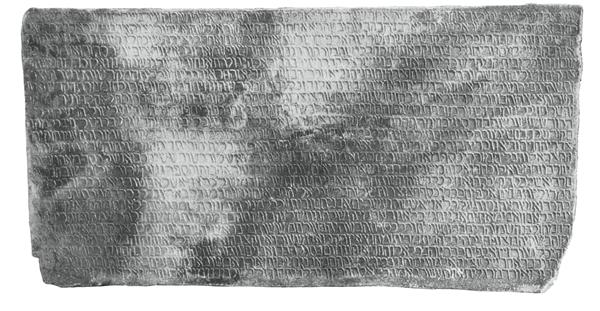The Mystery of the Missing Plaques
Sidebar to: Jerusalem’s Temple Treasures: Where Did They Go?

The Ezekiel plaques—and their relationship to the now-lost Massekhet Kelim plaques—are something of a mystery, as is their provenance. According to the original story, which goes back to the 1940s, the tablets were found more than a century ago at the traditional tomb of Ezekiel in Al-Kifl, Iraq, and thought to be anywhere between 300 and 2,000 years old.1
However, a recent study by Yoli Schwartz has revealed the Ezekiel plaques to be modern forgeries, crafted in Syria in the early 20th century.2 They only appeared to be ancient. It seems likely that the very similar Massekhet Kelim plaques, though now lost, were forgeries as well. The plaques may have been created to feed the growing public appetite in the late 19th and early 20th centuries for biblical antiquities. Ancient-seeming tablets, engraved with clues as to the resting place of the Temple treasures, would have suited the fascination of the time perfectly.
The forged plaques arrived in Jerusalem in 1957 or 1958, ending up at the Ben-Zvi Institute, where they continue to be displayed today, now with clear reference to their intriguing though problematic provenance and history.
Already a library member? Log in here.
Institution user? Log in with your IP address.

